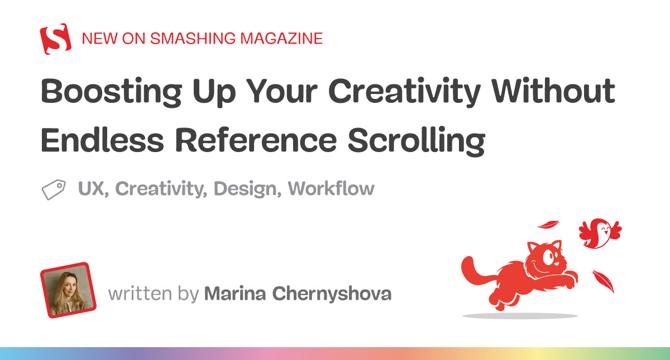Smashingmagazine
1M
448

Image Credit: Smashingmagazine
Boosting Up Your Creativity Without Endless Reference Scrolling
- Designers often rely on inspiration for creativity, but can struggle when it doesn't come naturally. Practical suggestions for working without inspiration include discipline and planning.
- Marina suggests using neuroscience to boost creativity by understanding how the brain works.
- The brain has two hemispheres — left (logical) and right (creative) — which complement each other in the design process.
- Product design requires a balance between logical problem-solving and creative innovation, involving both hemispheres for optimal results.
- The book 'Experiences in Visual Thinking' emphasizes the importance of integrating rational and intuitive halves of the brain for productive thinking.
- Engaging in physical activities like tennis, dance, and balance exercises can stimulate creativity and improve cognitive function.
- Activities like playing musical instruments, learning foreign languages, board games, and sports influence neural connections, enhancing memory and creativity.
- Engagement in diverse activities can benefit design work by promoting cognitive flexibility, problem-solving, and strategic thinking.
- Experiments show that physical activities like walking boost creativity, highlighting the link between physical movement and cognitive function.
- Trying new hobbies, meeting new people, and exploring different experiences can inspire fresh ideas and enhance creativity.
Read Full Article
26 Likes
For uninterrupted reading, download the app